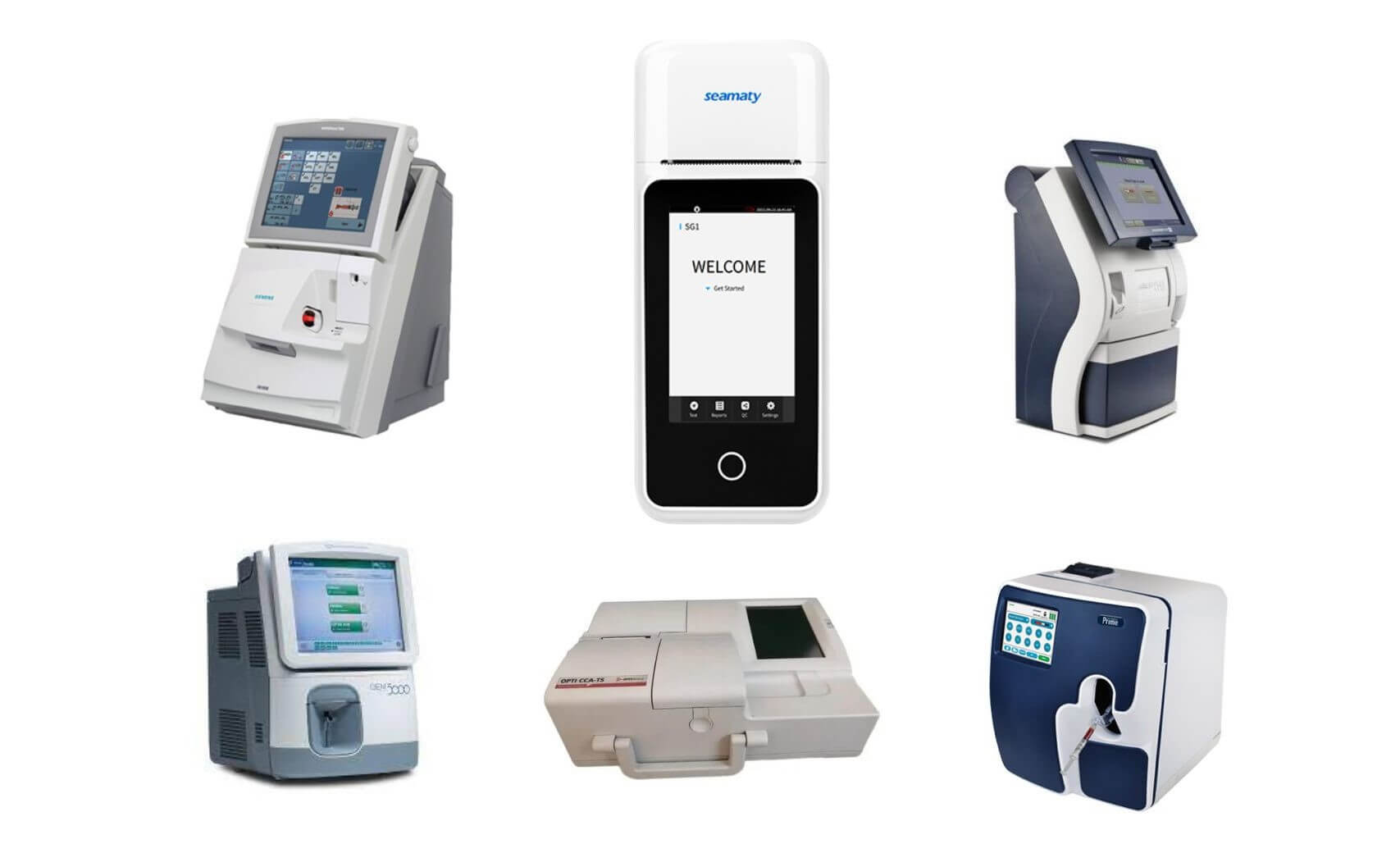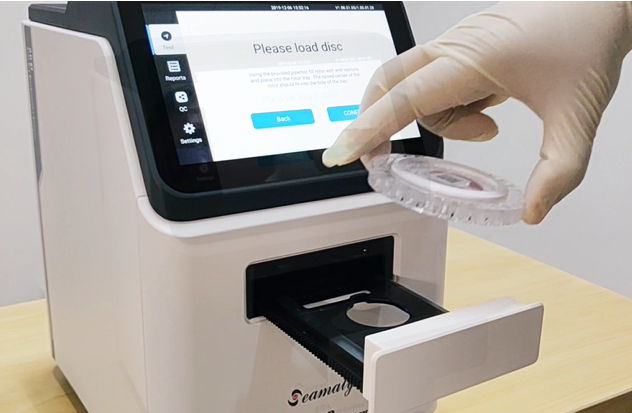POCT is a point-of-care test, which is a test performed immediately at the patient's side, at the site of the sample. POCT provides rapid results (typically within 30 minutes), eliminating the need for complex processing of samples in the laboratory.
Point of Care Testing technology has rapidly improved with advances in the life sciences. A variety of cards, plates, strips and portable compact instruments based on dry chemistry, colloidal immunochromatography, biosensing, particle coating and other technologies are widely used. These instruments can determine blood gases, ions, microbial antibodies or antigens, multiple drugs and anesthetics, cardiac injury indicators, and blood coagulation indicators in one go. From the traditional reagent strips for single analysis to multiplex analysis. Development from simple dip test to percolation and chromatographic migration detection. From visual inspection to microanalyzer testing, portable and palm-sized small Poct Test analytical instruments have become popular.
And these POCT devices are widely used in hospital emergency and clinical departments, hospital laboratory departments, home / personal testing, primary care, epidemic control, supervision and law enforcement scenarios.
5 Advantages of Point of Care Testing
1) Personalized testing.
POCT is a specific test for each patient with different diseases. It meets the needs of patients in a timely manner and reduces unnecessary waste. The examiner can communicate with the patient face-to-face and have a better understanding of the clinical situation.
2) Fewer steps in the testing process and faster test results.
In traditional diagnosis, a lot of time is wasted on sample delivery, pre-processing, organization, labeling, recording, and distribution. The reaction and analysis time is extremely low. In contrast, Poct Test has streamlined the steps, retaining only the core "sample-analysis-quality control-output" steps. In addition, the POCT test, with its portable and rapid response characteristics, significantly reduces diagnostic time, and POCT test results are usually obtained in just a few minutes. This is several times faster than the emergency reporting time of medical laboratories (about 30 min). This gains valuable time for patient care (especially for acute patients, such as those with acute myocardial infarction, where the risk of death increases by 7.5% for every 30-minute delay).
3) Easy to operate, no specialized personnel required.
POCT has no strict requirements for operators. Clinical department physicians, nurses, and patients can operate POCT with a little training by referring to the instrument's instruction manual.
4) Portable medical devices and reagents.
The medical devices used in POCT are usually portable and miniaturized. These devices are easy to move, simple to operate, easy to maintain, no calibration, and no special requirements for the working environment. The test reagents are packaged in single-person sealed packages, usually dry tablet-type solid reagents, with relatively long expiration dates, and do not require special storage conditions.
5)Poct Test application areas are expanding.
In the early days, POCT was applied to a few items such as blood glucose test and blood gas analysis. After years of development, it has been expanded to include liver function, kidney function, electrolytes, cardiac markers, blood coagulation and thrombosis, reproductive medicine, infectious diseases, infectious diseases, drug testing, tumor markers, and many other fields.
In summary, as a revolutionary field in laboratory medicine that is rapidly developing, bedside testing is receiving more and more attention and focus. However, due to the difficulty of quality assurance, countries are currently cautious about mutual recognition of the results of this method.
The following are 4 common POCT quality control issues.
-
1) The ease of operation of the bedside analysis instrument increases the chance of operator error in use and incorrect data reading.
-
2) The large variation in the level of operation and proficiency as operators are generally not professional testers.
-
3) The detection module on the chemical method reagent strip can affect the results due to errors in the thickness or aperture of each part and quality errors in the assembly of the kit.
-
4) Systematic differences between bedside analyzers and laboratory instruments due to differences in test samples or testing processes. For example, most bedside coagulometers that test prothrombin time (PT) use whole blood specimens. Their results are higher compared to plasma.
There are many other factors that affect quality control of point-of-care testing, all of which undoubtedly affect the accuracy of point-of-care test results and diagnosis and management. The advantages of Point of Care Testing should be fully utilized and its disadvantages should be avoided in order to make POCT more widely used.


